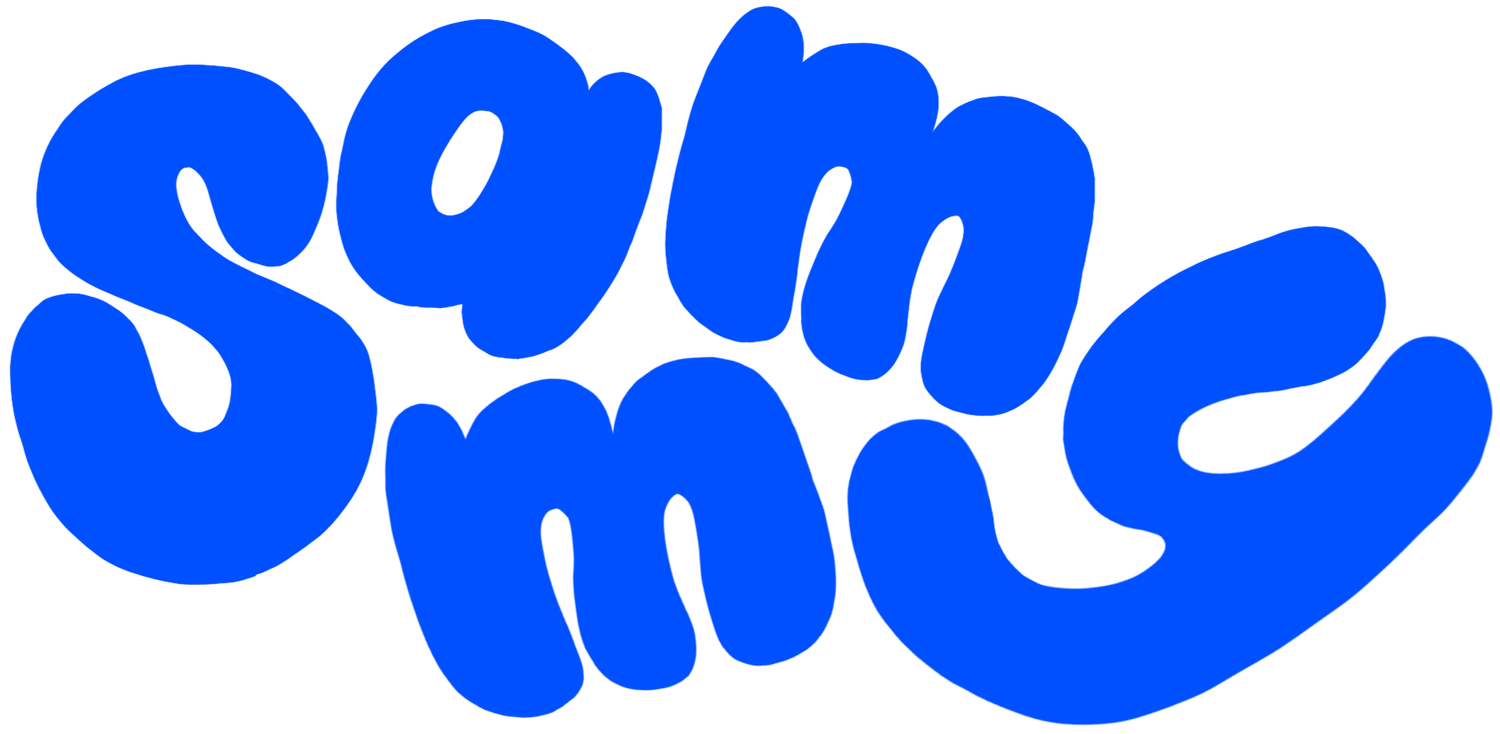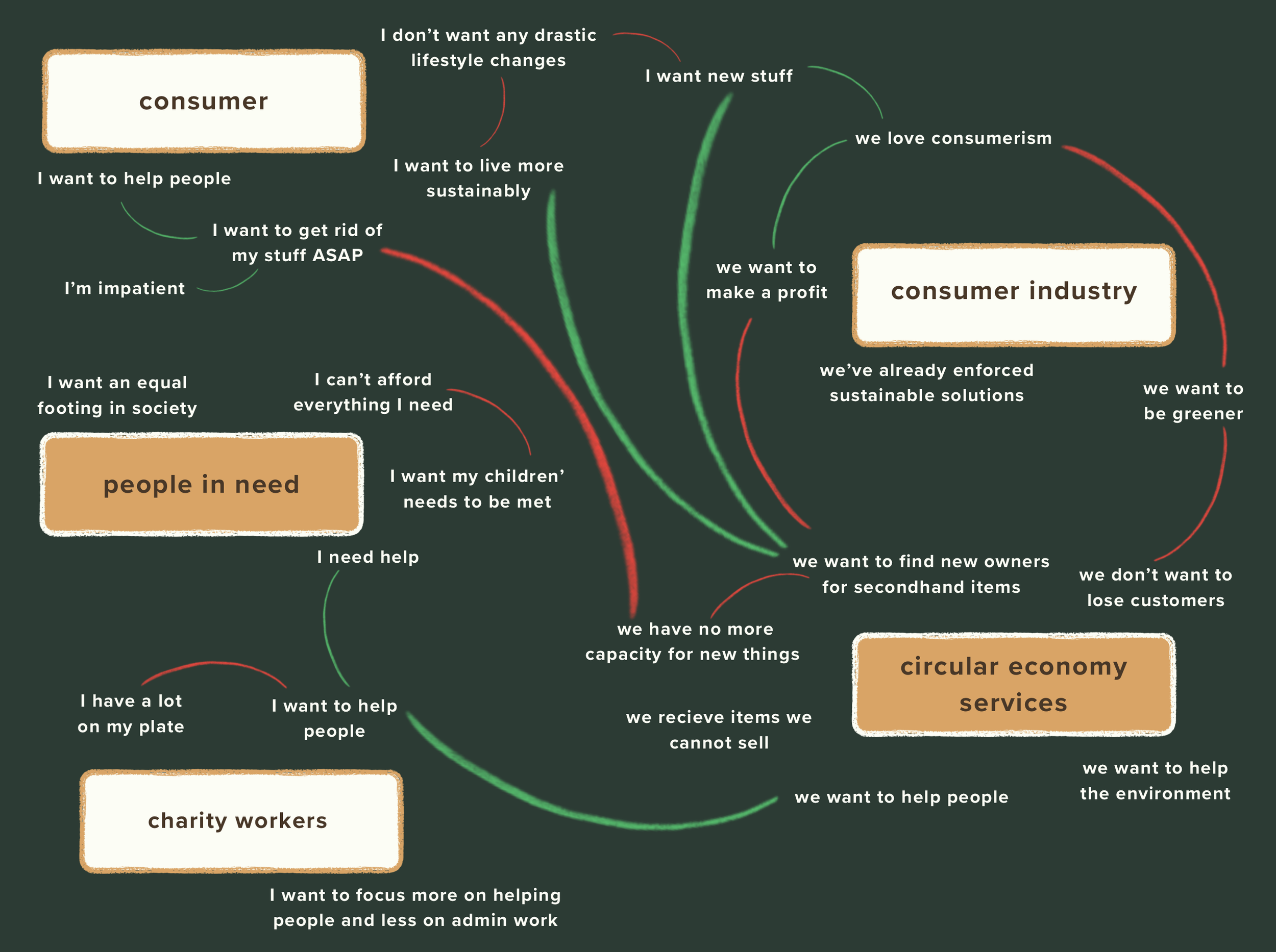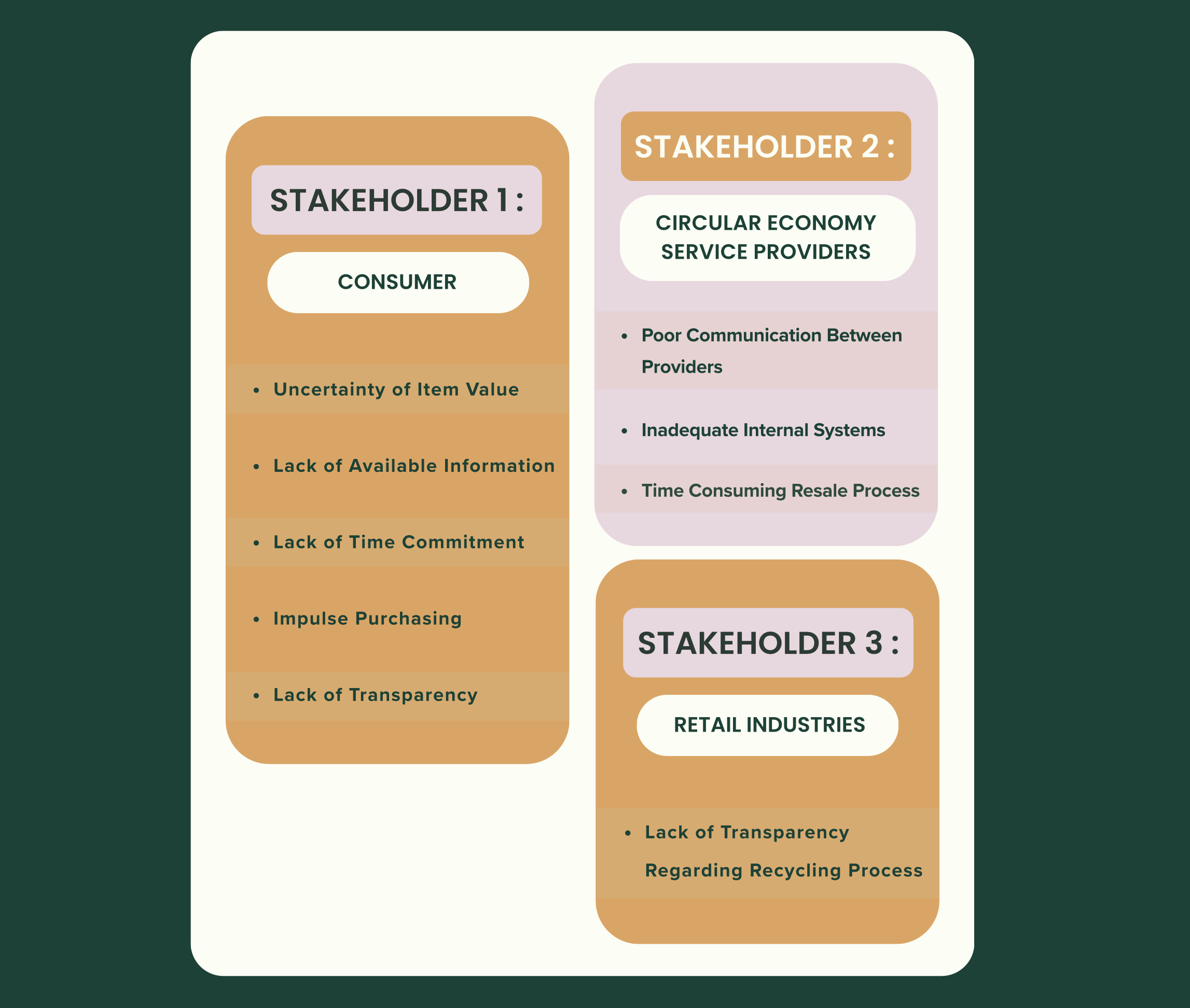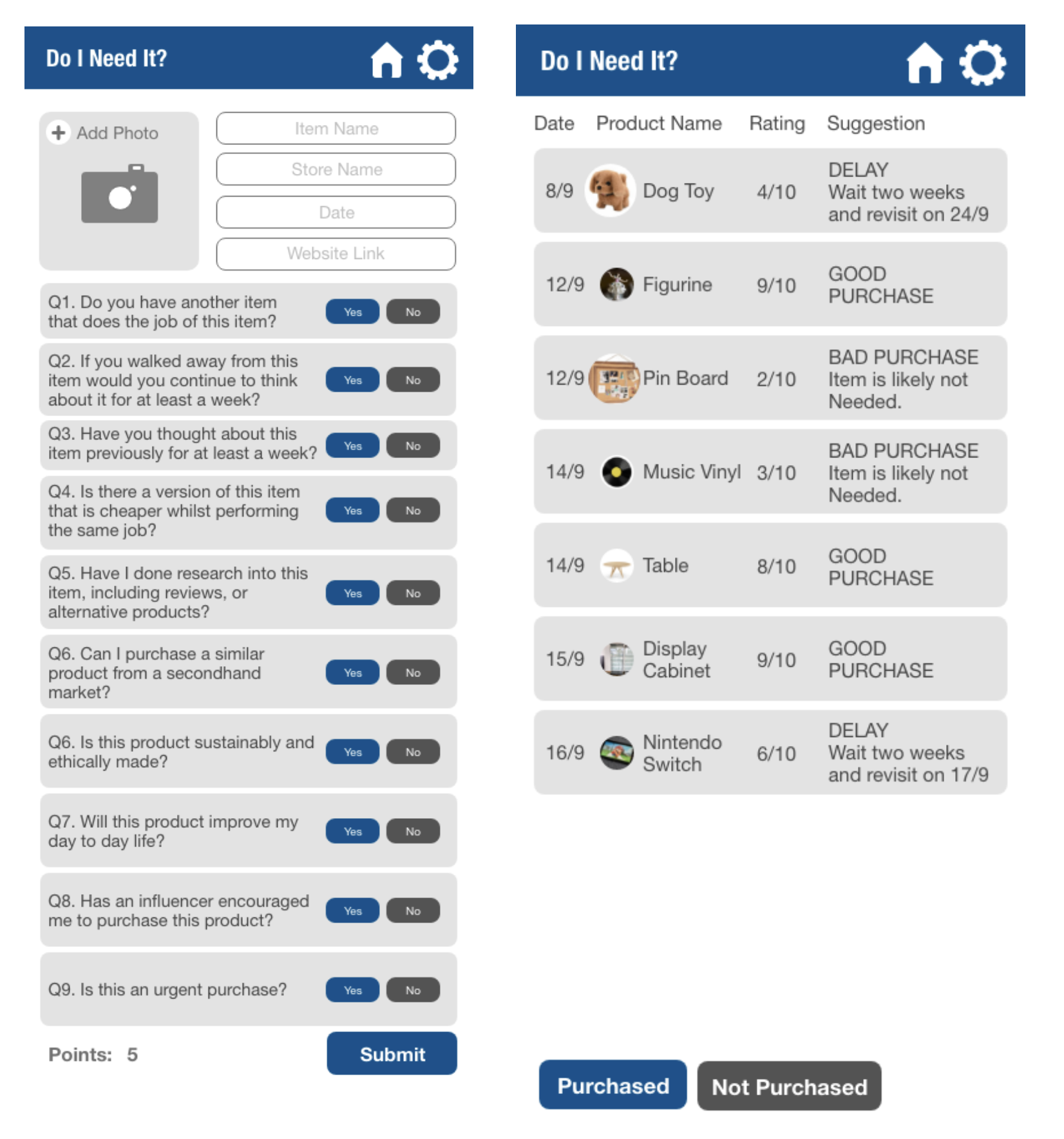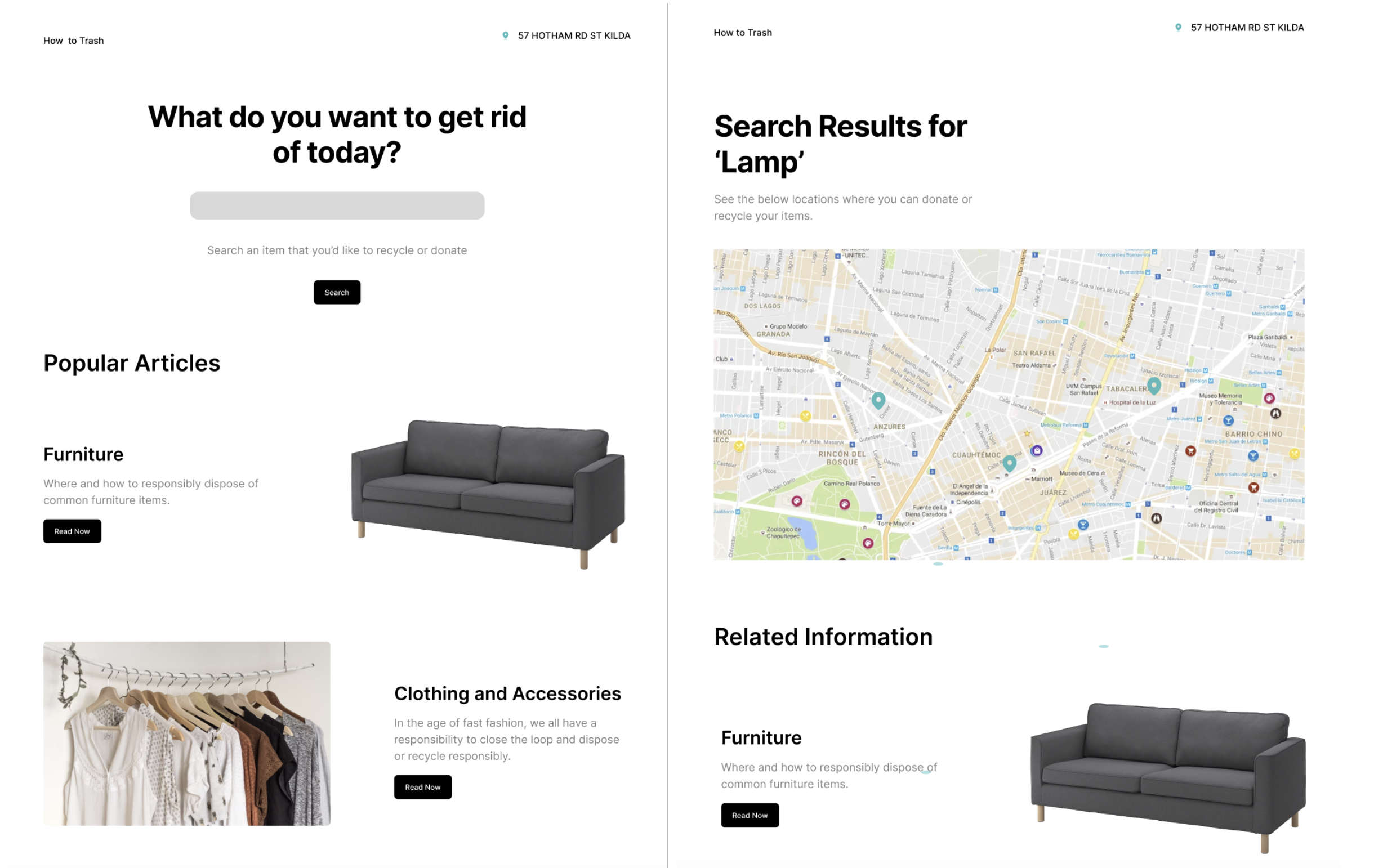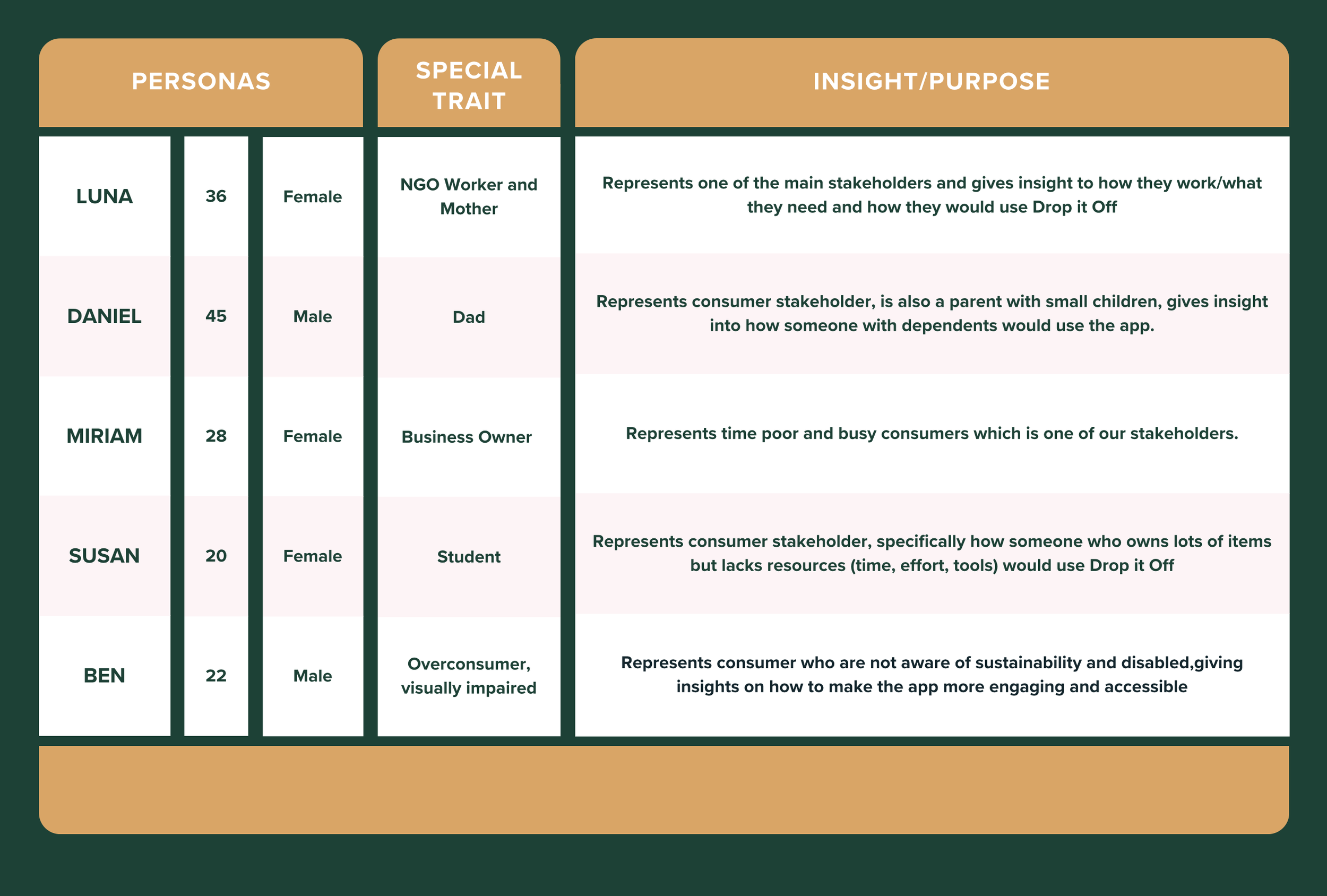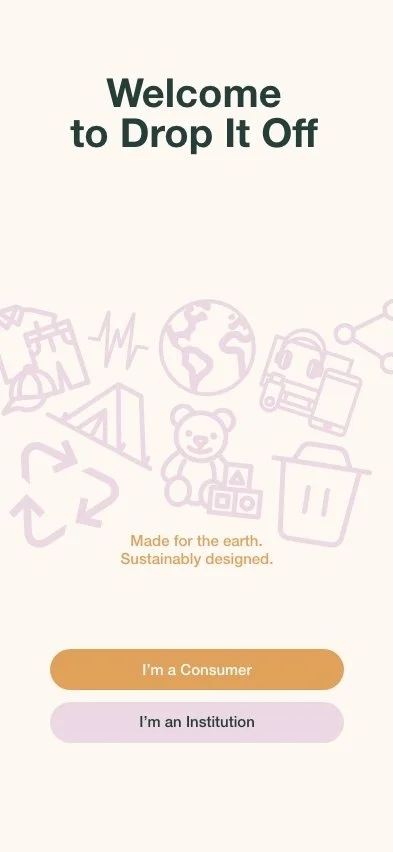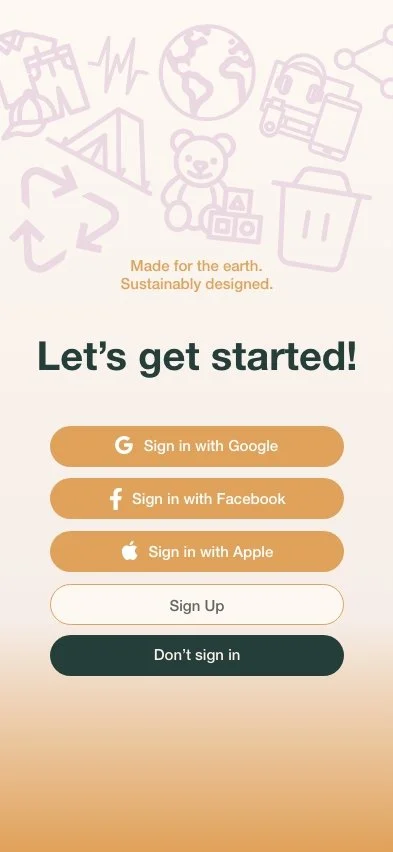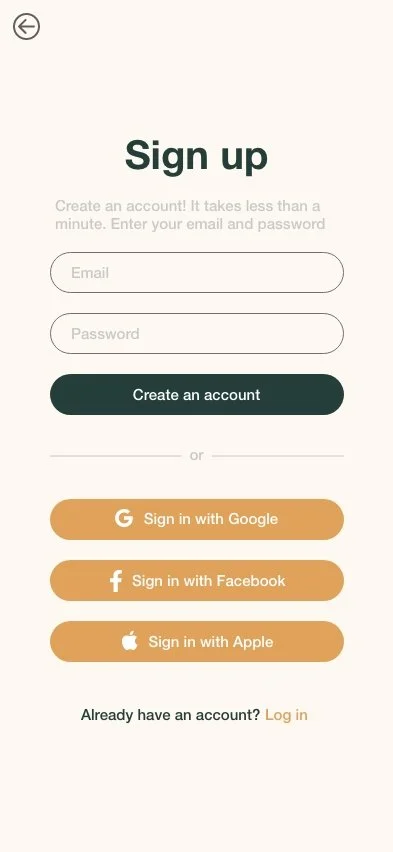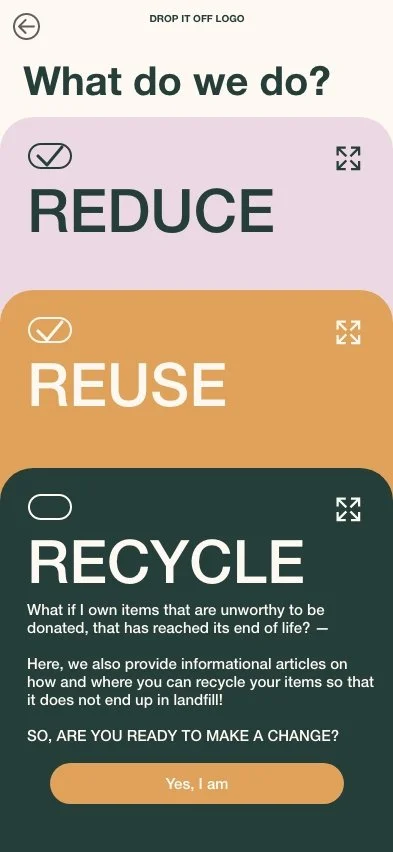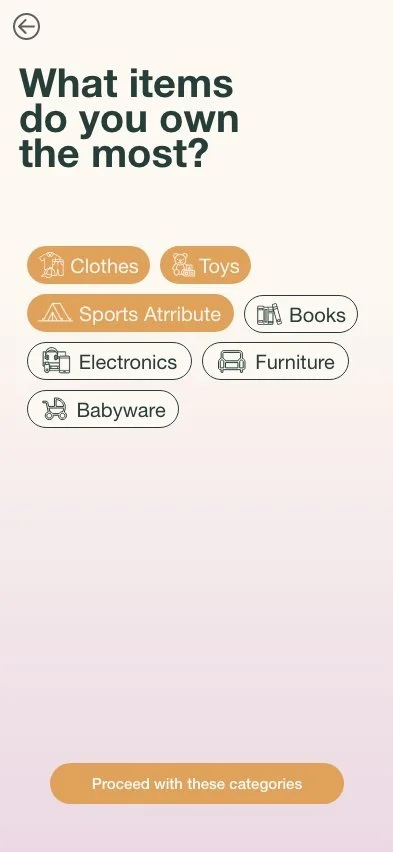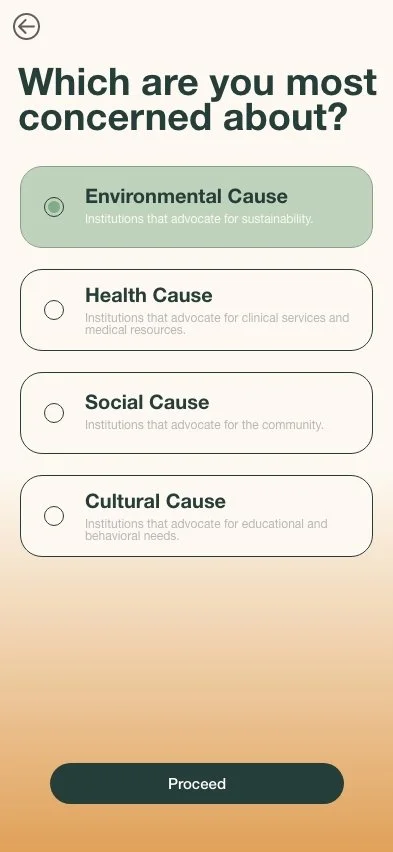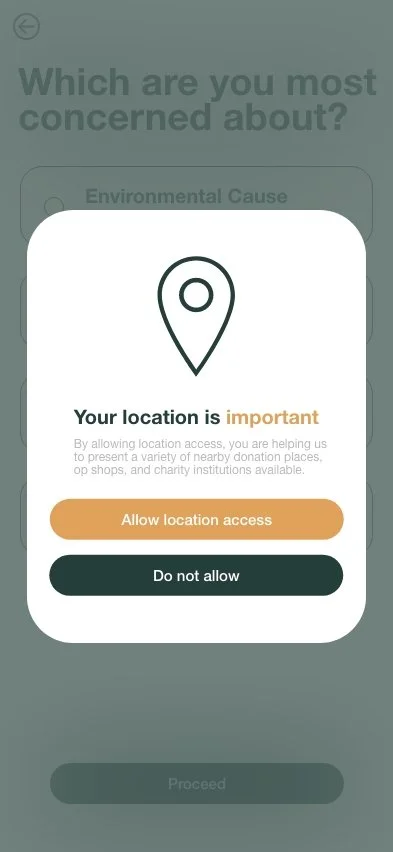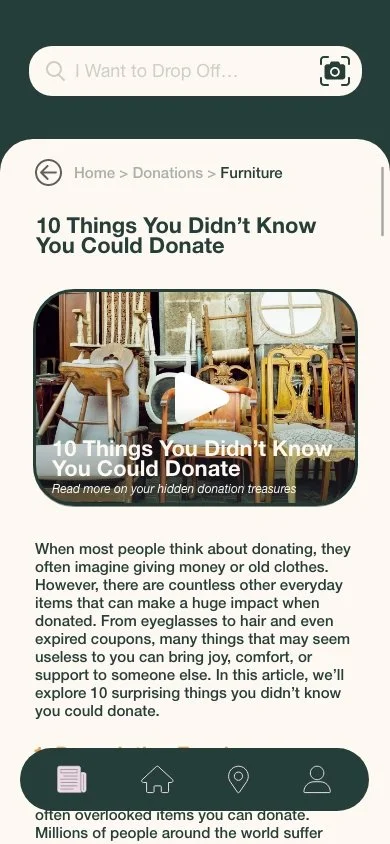drop it off app design:
tackling consumer waste
Role:
App and Product Designer
UX Designer
Graphic Designer
Video Editor
Timeline:
July 23 - October 20 2024
Skills:
Audience Research
Brand Analysis
Visual Design
Prototyping
Market Research
Brand Design
Marketing Strategy
Tools:
AdobeXD
Figma
Canva
Miro
prototype video
design process:
The purpose of this university project was to research and develop digital solutions to combat consumer waste.
Our app proposal, Drop It Off, aims to promote sustainable donations and recycling by connecting users to NFP organisations. Focusing on our situation of use, consumer waste, we developed and refined a rich picture featuring our stakeholders and their concerns. Building on this we determined that our main design concept would address the key stakeholder paradox of unmet donation needs and excessive donations to NGOs with limited storage capacity.
rich picture:
stakeholder concerns:
Through interviews with stakeholder groups and desk research, we developed the following list of stakeholder concerns that we needed to address:
preliminary design ideas:
We conducted desk research, including a review of relevant technologies, such as filtration techniques, newspaper articles and blogs, ride sharing apps such as Uber, Image Recognition Technology and Filing systems. This then informed our design decisions.
From this research and preliminary stakeholder interviews, we developed 5 app design ideas that addressed the concerns of our stakeholders.
1. Drop It Off: A streamlined donation process that provided information on where to donate unwanted items efficiently, while also providing greater transparency on where those donated items went.
2. Do I Need It: A service designed to help consumers stop impulse purchasing by allowing them to ruminate over their wants to determine if they truly need the item, thus reducing overconsumption.
3. How to Trash: An informational hub that provides education on how to dispose of unwanted goods sustainably while also demonstrating the impacts of responsible disposal, motivating people to do more.
4. SecondScan: A service that optimises second-hand selling by using AI to populate product information of items consumers want to sell, reducing the time consuming resale process.
5. EasyCarrier: A pick-up/delivery service for donated goods that saves consumers time by taking their donation items at their door instead of having to drop them off themselves.
After developing prototypes for each idea, we conducted further user research to gain feedback on our ideas and identify which option was most viable for our final product.
We found that option 1 was the most popular among our participants. From this point, our goal was to further develop a functional prototype of the service utilising the iterative design process.
personas:
We also developed personas of our relevant stakeholders to explore how they might use the app and what their specific needs may be.
These personas included an NGO worker, a time poor business owner, an environmentally conscious consumer, a student lacking resources, and an overconsumer who did not care about the environment.
Building from our prototypes, we combined 3 services (Drop It Off, Second Scan and How to Trash) into one cohesive platform called Drop it Off, which allowed users to easily locate donation locations by searching, filtering via tags or scanning the items they wished to donate and seeing which places needed them, while also providing informational articles on donating and recycling.
After determining a user journey flow, we each developed low-fidelity sketches, before moving onto mid and high fidelity prototypes in AdobeXD, creating an onboarding process, landing page, tag selection system, scanning feature, map and list function, article pages and a profile page.
user journey flow:
Once we had our working prototype, we invited 5 users to evaluate our app and go through the user journey flow. We received vital feedback, most prominent being:
● Users liked the overall design and aesthetic of the app
● Most users acknowledged the usefulness and ease of use for most aspects, particularly the onboarding, tag selection, map and list view and article searching.
● Most users struggled with our camera scanning function. Some users completely missed it, while some noticed it but did not realise that it also doubled as a quality assessment feature.
We will consider future improvements to our app using this feedback.
prototype: onboarding
prototype: landing page
prototype: second scan
prototype: educational articles
What I learned:
Through this project, I gained invaluable experience applying the iterative design process from conception to a final working high-fidelity prototype.
Through extensive user interviews and multiple rounds of prototyping, I learned to understand user needs and refined solutions when creating a service.
This project improved my ability to translate user feedback into practical, user centric designs and further reinforced the importance of analysing feedback in achieving impactful results.
